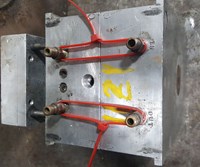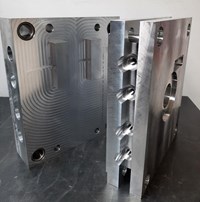Software’s AI-Powered Design Feature Automates CAD/CAM Processes
The CAD-AI computer-aided design technology uses the power of AI to automatically detect and sort varied mold features — such as holes, pockets, slots and fillets — to increase efficiency by automating everyday CAD/CAM processes with reliable and repeatable data.
Cimatron’s CAD-AI computer-aided design (CAD) technology accelerates mold design and production by using artificial intelligence (AI) to automatically detect part features within solid models. It is said the technology’s AI-based feature detection capabilities integrate seamlessly with the company’s computer-aided manufacturing (CAM) automation tools to streamline the generation of safe and accurate CNC tool path.
By leveraging the power of AI to automatically detect and sort varied mold features — such as holes, pockets, slots and fillets — moldmakers can increase efficiency by automating everyday CAD/CAM processes with reliable and repeatable data.
The CAD-AI is designed to help manufacturers automate repetitive and error-prone processes so they can confidently devote their valuable time to more productive demands. The feature-detection technology simplifies design and works in tandem with the company’s existing CAM automation technologies for improved workflow that helps moldmakers reach their full productive potential.
Using Cimatron CAD-AI in conjunction with its automated machining templates, manufacturers can populate templates which contain saved machining process data with up-to-date feature information detected using AI technology. Templates can be updated in seconds and used to automatically generate an error-free tool path which reflects a company’s best machining practices.
While currently focused on providing AI-based feature detection for moldmakers, the technology’s applications will broaden as development continues. Future versions of Cimatron CAD-AI will enable users to utilize machine learning to teach the system how to recognize specific part features using their own data. This ability to customize the software’s feature detection capabilities will ensure that a shop can automatically utilize data from past jobs for increased efficiency and the consistent application of best practices.
Related Content
-
How to Analyze and Optimize Cutting Conditions to Reduce Cycle Time
Plastic injection mold design and manufacturing company puts NC program optimization software module to the test. The results were surprising.
-
What Is Scientific Maintenance? Part 2
Part two of this three-part series explains specific data that toolrooms must collect, analyze and use to truly advance to a scientific maintenance culture where you can measure real data and drive decisions.
-
Best Practices for Hitting Critical Numbers: Communication and the Shrinkage Factor
Start with an upfront review, discussion and collaboration with the customer and then consider the shrinkage factor.

















